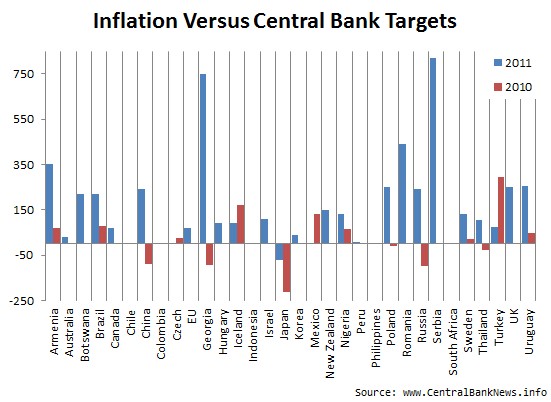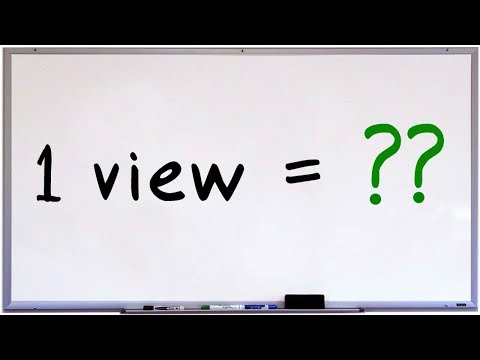Contents:


The solutions provided by Vedantu are thoroughly curated and revised by the team at Vedantu. All such information is provided solely for convenience purposes only and all users thereof should be guided accordingly. If you are looking to understand how our products will fit with your organisation needs, fill in the form to schedule a demo. An example of amortization is the cost of a patent being allocated over its useful life. Accounting solutions to help you manage your business just the way you want. Alternatively, you can display the asset as a gross on the asset side and the depreciation allowance on the liability side.

For example, a driver gives his car for tourism purpose, he has to consider the fact that car has a limited useful life and he needs to replace that after some years. For that, while calculating its operation cost, he has to consider the cost of car, its life, the resale value after useful life and add it to other expenses for calculating total cost. Straight-line depreciation expense is calculated by finding the depreciable base of the asset, which equals the difference between the historical cost of the asset and its salvage value. She has had the pleasure of working with various organizations and garnered expertise in business management, business administration, accounting, finance operations, and digital marketing. To calculate the sum of the years, you need to know the projected useful life and then add these together.
They can use shorter life to depreciate the asset but the same should be disclosed along with the reason of using such shorter life period in “Notes to Account”. Other companies can also depreciate the asset over shorter useful life, but note that useful life cannot exceed the life as prescribed under the act. So now we know the meaning of depreciation, the methods used to calculate them, inputs required to calculate them and also we saw examples of how to calculate them. Let’s find out as to why the small businesses should care to record depreciation. Thus the company can take Rs. 8000 as the depreciation expense every year over the next ten years as shown in depreciation table below. Vakilsearch is India’s largest provider of legal, secretarial, accounting, and compliance services.
Has been provided alongside types of What is the Important notes of depreciation? Theory, EduRev gives you an ample number of questions to practice What is the Important notes of depreciation? In English & in Hindi are available as part of our courses for Commerce. Download more important topics, notes, lectures and mock test series for Commerce Exam by signing up for free. Now, let’s delve into the topic of whether depreciation is compound or simple. NCERT solutions for CBSE and other state boards is a key requirement for students.
Determination of depreciation and the profit and loss accounts of a company
Now, after using it for three years, you want to sell it and buy a new one. You will obviously sell it at a lower price than its actual cost after calculating the depreciation in the value of your car over the course of three years. Thus, the resale value of the car will always be less than the price at which it was bought. Therefore, depreciation would be higher in periods of high usage and lower in periods of low usage.
Thus depreciation is shown as an Indirect expense in the debit side of profit and loss account and asset’s value is to be shown after the reduction of depreciation in the balance sheet. Plus, since different assets have different useful lives and depreciation methods, you can strategically choose which assets to purchase and how to depreciate them to maximize your tax benefits. First, you need to determine the cost of the asset, its useful life, and its salvage value. Once you have this information, you can choose one of these methods formulas to calculate the depreciation.
- The resulting net book value of the asset is referred to as the total price paid minus any cumulative depreciation.
- However, if the company did not record any depreciation and records the asset’s worth as unchanged from its purchase value, this will give a false value of the asset.
- In any case, asset worth decays after some time as the consequence of the advantage utilizing that possible reason for an advantage’s mileage.
- Land is the only Tangible asset that cannot be depreciated as the value of land appreciates with time.
- Any inventory that expects to sell within a year of its production is a current asset.
Whenever a company records accumulated depreciation, it allows managers to get an accurate picture of expenses incurred while using that asset. They can then compare the expense with revenues generated by the respective asset. Accounting entry – DEBIT depreciation expense account and CREDIT accumulated depreciation account.
Related Terms
If the vehicle were to be sold and the sales price exceeded the depreciated value then the excess would be considered a gain and subject to depreciation recapture. In addition, this gain above the depreciated value would be recognized as ordinary income by the tax office. If the sales price is ever less than the book value, the resulting capital loss is tax deductible. If the sale price were ever more than the original book value, then the gain above the original book value is recognized as a capital gain. Residual value – It is the reduced amount at which a company is able to dispose of an asset after the completion of its useful life. Any change in the expected residual value of an asset should be adjusted over the remaining life of the asset, and depreciation already booked should not be retrospectively changed.

The https://1investing.in/ value of an asset on the balance sheet is the difference between its historical cost and accrued amortisation. At the end of the useful life of an asset, its balance sheet carrying value will match its salvage value. Depreciation is an accounting method of allocating the cost of a tangible asset over its useful life. Depreciation records to tie the cost of using a long-term capital asset with the benefit gained from its use over time. She earned her Master of Science in Accounting at University of Central Florida. Bench gives you a dedicated bookkeeper supported by a team of knowledgeable small business experts.
Multiple Shift Depreciation
They may also want to consult with a financial professional at Vakilsearch to determine the most appropriate method of depreciation for their specific needs. Compound depreciation is a method of calculating depreciation in which the depreciation amount decreases each year as the asset’s value decreases. Simple depreciation is a method of calculating depreciation in which the same amount is subtracted from the asset’s value each year. Simple depreciation is generally easier and faster to calculate, while compound depreciation provides a more accurate reflection of an asset’s value over time. You can access the depreciation accounting format in all three available formats PDF, Word, and Excel.
Gladstone Commercial Corporation Reports Results for the First … – Digital Journal
Gladstone Commercial Corporation Reports Results for the First ….
Posted: Wed, 03 May 2023 20:44:42 GMT [source]
For calculating the profit or loss statement of the company, it is essential to first determine the expenditure made by the company. The company can adopt an internalised method of determining the useful life of an asset by determining the number of years for which it will use an asset. Determining the useful life of the asset by determining the period or number of years for which an asset will be used by a company. Finally, interests and taxes are paid by the company, and what remains is the net profit or loss of the company. The remainder is compared with the net income of the company, and if the answer is a positive value, that is the net profit of the company. If this value becomes negative, then the business is burning cash or incurring losses.
In the case of the accumulated depreciation formula Method, depreciation is charged on the book value (cost – depreciation) of the asset consistently each year. Under this method, book value keeps on diminishing so, yearly depreciation also keeps on reducing. Depreciation is characterized as the decrease in the cost of a fixed asset in a systematic way with a passage of time until the estimation of that asset becomes zero or minimal. Depreciation is recorded on the income statement as the expense and represents how much of an asset’s value has been used for that particular year.
Additional DepreciationNo additional depreciation is available.Additional depreciation is available to a certain class of assets during the initial year. If “salvage value” sounds unfamiliar to you, it also known as terminal value, scrap value, residual value, or disposal value. Calculating accumulated depreciation is a simple matter of running the depreciation calculation for a fixed asset from its acquisition date to its disposition date. You can continue following the same formula for the remaining useful life to determine how much an asset will depreciate over time.
Livent Releases First Quarter 2023 Results – Investing News Network
Livent Releases First Quarter 2023 Results.
Posted: Tue, 02 May 2023 20:44:09 GMT [source]
The accountant should deduct salvage value of the machinery from its original price, and divide the amount with it’s useful life. Using the straight line basis method, the depreciation for the machinery will be $1,000 (($10,500 – $500) / 10). For this reason, this technique is referred to as the double-declining-balance method. To illustrate, suppose a business has an asset with Rs.1,000 original cost, Rs.100 salvage value, and 5 years useful life.
You need to determine a suitable way to allocate cost of the asset over the periods during which the asset is used. Generally, the method of depreciation to be used depends upon the patterns of expected benefits obtainable from a given asset. This means different methods would apply to different types of assets in a company.
As per the Modified Accelerated Cost Recovery System , which is the system accepted by the IRS, depreciation can be calculated by either the straight-line method or the declining balance method. As the name suggests, the double declining balance method uses the method of depreciating the value of assets twice at the rate at which they are depreciated under the straight-line method. Thus, the depreciation is calculated as being highest in the first year of calculation and declines in the following years. It allows you to see how much of an asset has be wrote off and get an idea of its remaining useful life. They are anything that reduces a company’s spending power for one year. Examples include short term debts, dividends, owed income taxes, and accounts payable.
Part A of Schedule II also talks about the specifications for the useful life of an asset. It states that the useful life of an asset will be as long as the period mentioned in Part C of the schedule for each asset or class of assets. Further, it states that the residual or salvage value of the asset shall be approximated at not more than five percent of the initial value of the asset.
Although it is a bit complex to calculate depreciation in companion to the straight-line method but is highly useful for deferring tax payments and maintaining low profitability of the business in the initial years. Under the double-declining balance method, the depreciation expense for each year is calculated by multiplying the asset’s book value at the beginning of the year by a fixed rate that is double the straight-line rate. The book value is reduced each year by the amount of depreciation expense recorded. This accumulated depreciation in the profit and loss account acts as a non-cash expense which reduces the total tax liability. While making a journal or ledger entry, companies debit all individual depreciation expenses and credit the accumulated depreciation account. As accumulated depreciation is a contra account, therefore crediting any entry will increase its value.
Sally recently furnished her new office, purchasing desks, lamps, and tables. The total cost of the furniture and fixtures, including tax and delivery, was $9,000. Sally estimates the furniture will be worth around Straight Line Depreciation Method $1,500 at the end of its useful life, which, according to the chart above, is seven years. The final cost of the tractor, including tax and delivery, is $25,000, and the expected salvage value is $6,000.
The depreciation calculation method may also help manipulate the financial statements without going against accounting norms. It also makes the appropriate entries in all the relevant books of accounts and reports. So, the next time you generate your company’s financial statements, you can do so quickly, accurately, and efficiently with TallyPrime. Alternatively, it is just an allocation process per the matching principle instead of a technique that determines the fair market value of the fixed asset over the years.
- As depreciation cost is high initially, it results in lower net income during the initial period.
- It is an amount that an asset is estimated to be worth at the end of its useful life.
- Since the value calculated varies over time, it is more complicated to calculate than the straight-line method.
- EBITDA refers to the earnings before interests, taxes, depreciation, and amortisation.
- All such information is provided solely for convenience purposes only and all users thereof should be guided accordingly.
There are two methods of calculating the accumulated depreciation accepted by GAAP. Is the total depreciation expense allocated since the particular asset was first used. Depreciation is the systematic allocation of the depreciable amount of an asset over its useful life.
For example, let’s say a company buys a new delivery truck for $50,000. The company expects the truck to last for 10 years, after which it will have no salvage value. In summary, the age of an asset can affect its productivity, maintenance costs, and eventual salvage value, all of which can impact the rate of depreciation.
